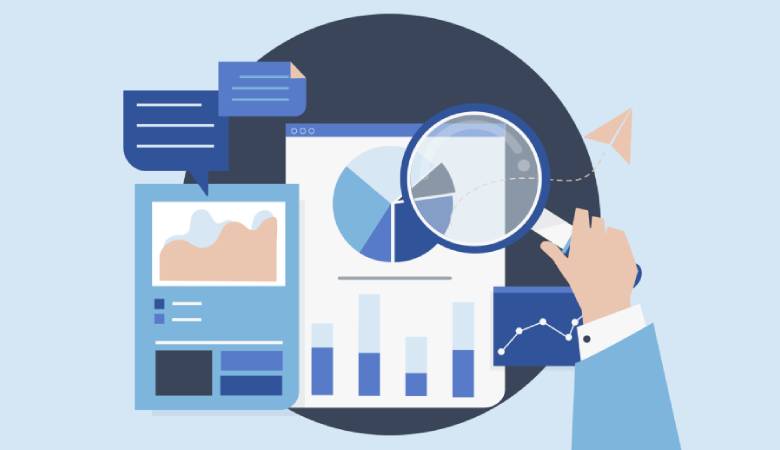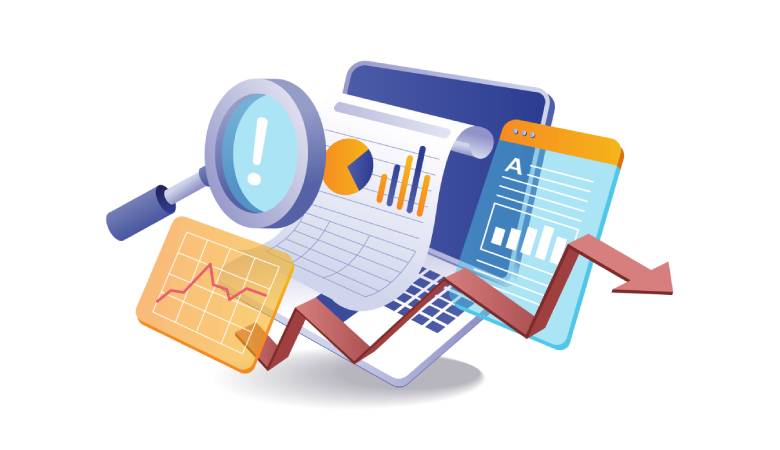Understanding Crawl Budget Optimization — Here’s Everything You Need to Know
We’ve been working in SEO long enough to remember when visibility on Google felt straightforward — sprinkle some keywords, tweak a few tags, and watch rankings rise. But once we started digging into how Google’s web crawlers operate, we hit a pivotal concept: crawl budget optimization.
Over time, it became clear that crawl budget is especially critical for large websites or platforms with constantly updated content. Learning how search engines decide which pages to crawl and how often completely shifted our approach. It allowed us to focus Google’s attention where it matters most — on high-value, high-impact pages.
What Is a Crawl Budget?
A crawl budget is the amount of time and resources that Google is likely to spend crawling your site. Think of it as an allowance — it determines how many of your website’s pages Google will review and potentially include in its search index.
If you’re new to crawl budget optimization, it’s basically the level of attention search engines — particularly Google — allocate to crawling your content.
Googlebot (also known as a spider or bot) has limits on how frequently and how many pages it can visit on your site within a given time frame. That limit is your crawl budget.
While smaller websites may not feel the impact, large or enterprise-level sites with thousands of URLs often struggle. If Google can’t crawl efficiently, your most important pages might not get indexed — and that directly affects visibility and performance in search results.
How Is Crawl Budget Determined?
From our experience, Google determines your site’s crawl budget based on two main factors: crawl capacity limit and crawl demand. These work together to define how many pages Google can and wants to crawl. The entire process is automated and driven by Google’s core algorithms.
Let’s break them down:
- Crawl Capacity Limit refers to the maximum number of connections Googlebot is allowed to make to your site without overloading your servers. Google tracks how well your website handles its crawl activity. If your site is fast and reliable, Google will increase this limit — crawling more pages, more often. If your server slows down or errors occur, the crawl rate decreases to prevent site performance issues.
- Crawl Demand is about how important Google believes your pages are. Popular, frequently updated pages — or those with higher engagement — are crawled more regularly. If your content gets consistent traffic, or you’ve recently made major structural changes (like changing URL formats), your crawl demand increases, prompting Google to revisit and re-index those pages.
Together, crawl capacity and crawl demand define how Googlebot navigates your site. Even if Google can crawl more pages, it won’t do so unless the demand justifies it.
Ultimately, Google assigns a larger crawl budget to websites that are technically sound, consistently valuable, and structured for discoverability. When you align technical performance with high-quality content and user value, you give Google every reason to focus its attention on your most impactful pages — and that’s the foundation of successful search engine optimization (SEO) in 2025.
How to Optimize Your Crawl Budget
1. Audit Website Index Regularly
One of the first things we recommend when working on crawl budget optimization is checking which pages are actually getting indexed. Regular audits using tools like Google Search Console, Ahrefs, or SEMrush reveal exactly which pages search engines are prioritizing.
This insight helps us clean out unnecessary pages and keep the focus on high-value content. For example, if you’re managing an eCommerce store, clearing out outdated product listings every few months allows Googlebot to focus on current, in-stock items.
From an SEO reporting standpoint, this ensures the index is aligned with what drives actual traffic and conversions.
2. Remove or Update Low-Quality Pages
Not every page adds value — especially if the content is outdated, thin, or no longer relevant. In our experience, these low-quality pages dilute crawl efficiency and can impact overall site quality in the eyes of search engines.
We recommend:
- Refreshing outdated blog posts with updated insights.
- Consolidating similar pages into one authoritative piece.
- Removing pages that serve no strategic purpose.
Doing this not only refines your crawl profile but improves relevance and performance metrics like engagement and bounce rate.
Pro Tip: Always implement 301 redirects when deleting content. Redirects preserve link equity, avoid broken links (404 errors), and support smoother crawling paths.
3. Optimize Website Speed
Site speed plays a major role in crawl efficiency. The faster your pages load, the more content search engines can process during each crawl session — especially on large sites.
Speed optimizations we typically recommend include:
- Image compression
- Content caching
- Reducing page request bloat
- Leveraging a Content Delivery Network (CDN) for global performance
Faster sites also contribute to better SEO performance by improving user experience and increasing time on site — both of which Google values.
Tools like Website Grader, GTmetrix, or PageSpeed Insights can help track improvements and identify bottlenecks.
4. Implement a Strategic Internal Linking Structure
Internal links help crawlers navigate your website more efficiently. A solid linking strategy ensures that your most important content is easily discoverable — and indexed faster.
We typically link from high-performing or high-traffic pages to those that need more visibility. This boosts discovery and spreads link equity to priority content.
Pro Tip: Keep critical pages within three clicks of your homepage. This improves both crawl accessibility and user experience — a win-win for visibility and performance.
5. Address Duplicate Content with Canonical Tags and Redirects
Duplicate content can confuse crawlers and waste crawl budget. We use canonical tags to signal the preferred version of a page when similar content exists across URLs.
For example, on product pages with multiple sorting or tracking URLs, canonical tags clarify which version Google should index.
We also implement 301 redirects when consolidating duplicate or moved pages. These redirects help guide both users and search engines to the right destination — improving crawl flow and maintaining search equity.
However, we avoid overusing redirects. Too many in a chain can reduce crawl frequency and delay indexing, especially on large or complex sites.
6. Clean the Redirect Chains
A redirect chain occurs when multiple redirects happen between the initial URL and the final destination URL. For example, if URL A redirects to URL B, which then redirects to URL C, it causes both visitors and search engines to wait longer for the final page to load.
We recommend keeping redirect chains as simple as possible. If there’s a series of redirects leading to one page, we simplify it by cutting out unnecessary steps — ideally pointing the original URL directly to the final page. This enhances crawl efficiency and ensures that both users and crawlers can reach content faster.
Crawl Budget Best Practices
Optimizing your crawl budget isn’t just about cleaning up redirects or removing low-value pages. It’s about implementing a range of strategies that improve both crawling and SEO performance. While crawl budget optimization may be a more technical concept, it’s a critical part of maintaining site health, especially for large websites.
Here are a few best practices to maximize your crawl budget:
1. Manage and Organize URL Inventory
Google relies on webmasters to tell them which pages are worth crawling. This means Googlebot doesn’t need to waste time crawling pages that don’t add value. We use tools like robots.txt and canonical tags to help guide search engine crawlers toward the most important content and keep irrelevant pages out of the loop.
For example, we block URLs with session IDs or filters that don’t generate unique content. This way, Google can focus its attention on the pages that matter for your search rankings.
Pro Tip: Using robots.txt to block unimportant pages is better than using a noindex tag. When using noindex, Google still requests the page, using up crawl budget before discarding it. Block the URL directly via robots.txt to save resources.
2. Consolidate and Reduce Duplicate Content
Having duplicate content across your site is another significant waste of crawl budget. We carefully monitor and resolve duplication issues to prevent crawlers from wasting time on similar pages.
We consolidate duplicate pages or use canonical tags to indicate the main version of a page. For example, if multiple URLs feature the same product due to different filtering or sorting methods, we merge them into a single canonical page. This ensures that Google recognizes the primary version and directs link equity to it.
3. Use Proper Status Codes for Removed Pages
When we need to remove a page from my website,we ensure it returns the correct status code. Pages that are no longer necessary should return either a 404 (Not Found) or 410 (Gone) status code.
This signals to Googlebot that the page is no longer available and prevents unnecessary crawling, preserving crawl budget for active pages.
We also make sure to check the Index Coverage Report in Google Search Console for any soft 404 errors and address them promptly to keep the crawl process running smoothly.
Update Sitemaps and Tags
Keeping sitemaps updated is essential for efficient crawl budget management. We regularly add new URLs and remove outdated ones from my sitemap to make sure Googlebot is focusing on fresh content. Using the
Pro Tip: If your website frequently adds new pages, consider automating the generation of sitemaps. This ensures new URLs are added, and
Monitor Crawl Stats with Google Search Console
We regularly check the Crawl Stats report in Google Search Console to monitor how often my pages are being crawled and to identify any potential issues that could affect site visibility. If there’s a sudden drop in crawl frequency, it could indicate a server issue or another technical problem.
By analyzing crawl data,we can identify errors, monitor response times, and catch potential issues early. If we see a decline in crawl frequency,we immediately investigate and resolve it to ensure that Googlebot continues to focus on the most important pages.
Reduce Server Response Times
We recently read an analysis by Chandan Kumar, the founder of Geekflare, a tech review site with reasonable traffic. He found that higher server response time results in lower Google crawl requests.
When a server is slow, Googlebot reduces how many pages it tries to crawl to avoid overloading the server. Fewer crawl requests mean fewer pages get indexed. Simply put, the slower your server, the fewer pages Google crawls.
We recommend upgrading to faster hosting, using a CDN to speed things up, and optimizing your database to handle requests more efficiently. These changes can make a huge difference in reducing your server response time.
Here are a few more ways we can reduce server response times:
- Reduce large files, compress images, and remove unnecessary code.
- Pre-fetch critical resources to improve speed and reduce delays.
- Replace web fonts with system fonts or optimize their delivery.
- Fix broken links and remove pages that no longer exist.
Optimize Crawl Budget Like a Pro
We thought the crawl budget was just a small technical detail. But we realized that with a few simple changes — like getting rid of outdated pages, speeding up load times, and organizing links — we can help Google focus on the pages that really matter on our site.
Taking control of your crawl budget is all about being wise with your website’s resources. It’s like clearing the clutter so search engines can find the best content quickly and easily. We’ve started seeing improvements in how our site shows up in search results, and it’s easier than we thought!
Partner with our Digital Marketing Agency
Ask Engage Coders to create a comprehensive and inclusive digital marketing plan that takes your business to new heights.
If you want your website to perform better and manage crawlers efficiently, we recommend trying out some of these tips. It’s not as complicated as it sounds, and a few small adjustments can make a big difference.








